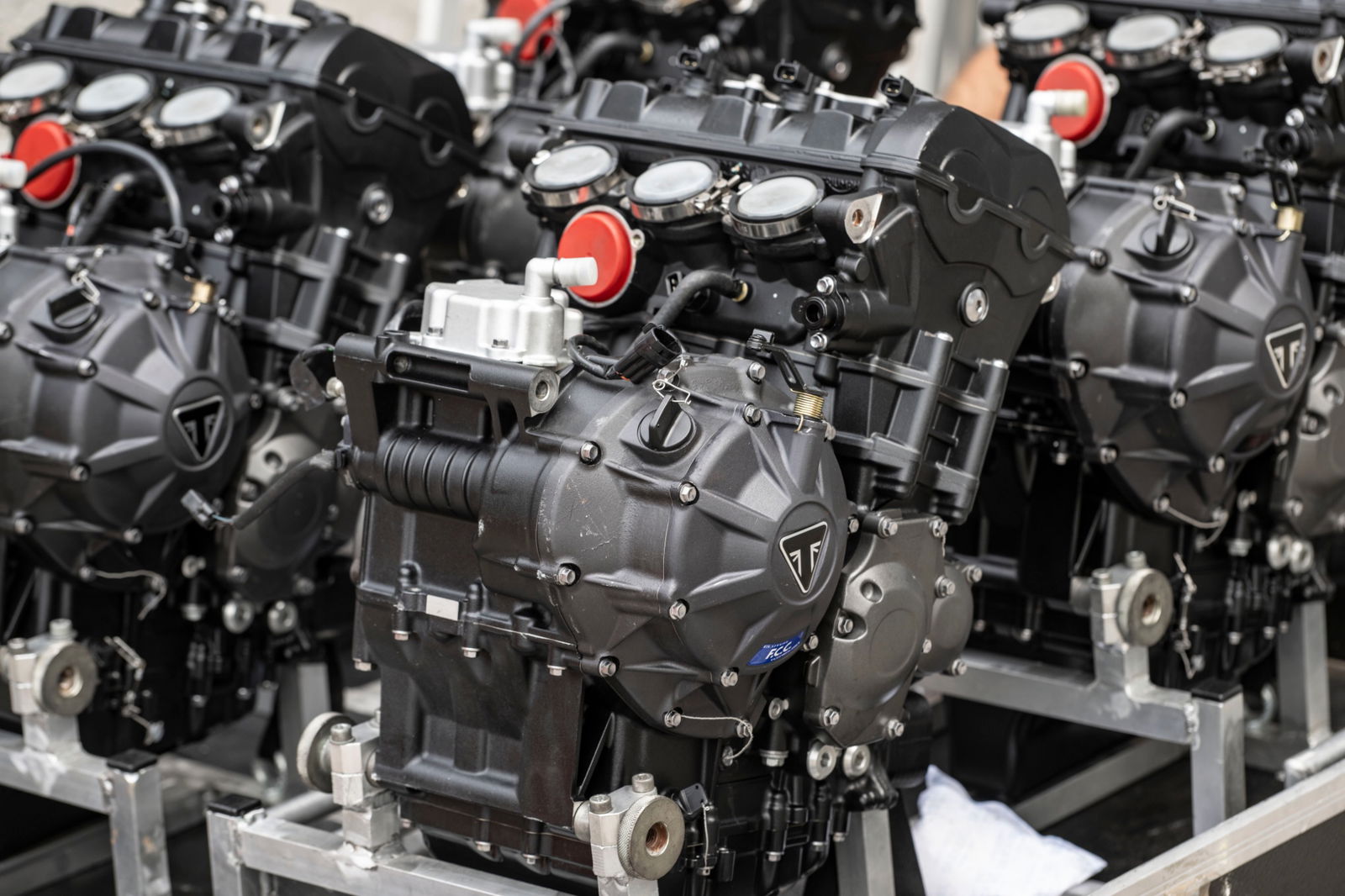How Triumph achieves 1% tolerance for Moto2 engines

“They say, ‘What for? I'll take whichever engine you give us’,” said Trevor Morris, technical director of ExternPro, which prepares and maintains the 765cc triples on behalf of Triumph.
“The teams would let me know for sure if they thought an engine was better or slower! But we just don't get that. Prevention is better than cure.”
That ‘prevention’ system begins by eradicating sources of variation during the manufacturing process at Triumph and ends with ExternPro dyno-testing and grading each engine in terms of power and torque.
- Moto2: Triumph pledge more rpm, horsepower for 2023
- Triumph to focus on Moto2, MotoGP ‘a whole different ball game’
- Triumph: Electric power? ‘Let’s not kid ourselves...’
The end result is a difference of around 2.5-3hp (from a maximum of approx. 140hp) across 120 engines.
But when those 120 are then divided into four batches, for each new engine cycle handed to the 30-rider grid, engines of similar performance are grouped together. That cuts the output variation on track to less than 1%.
“Roughly 1-1.2 horsepower,” Morris told Crash.net.
“We normally run in four batch rotations, so that's 120 engines plus spares. We check not only the horsepower, but also the torque curves and then we split them into batches of 30.
"So across 120 engines, from the top to the bottom, we will get something like 2.5 maybe 3 horsepower [difference]. It's impossible to have them all exactly the same. But then when you split those 120 into batches of 30, the difference goes down to 1-1.2 horsepower.”
That means although a sensitive rider might feel a difference in performance from a new engine, the chances are it’s the same for everyone.
“Sometimes one rider might say, ‘this new engine I've got is a little bit slower or a bit faster’. But then I'll get the same comment from everybody because they're all getting this batch,” Morris explained.
- Yamaha ‘can’t imagine’ V4 engine switch, ‘enormous task’
- Keith Huewen: ‘World domination for Ducati then?’
- MotoGP aerodynamics: Ride-height as ‘DRS’, moveable fairings in future?

‘The machines never stop’
Steve Sargent, Chief Product Officer at Triumph, explained some of the methods used to iron out differences in the manufacturing process.
“For example, when we're machining the cylinder heads for Moto2, we pre-warm all of the machining centres up, because you can get some tolerance variation through the different temperatures during a shift,” he said. “Then the guys machine the whole batch without having a break.
“Normally in a traditional production day, they'd have a morning break, a lunch break, an afternoon break. But we make sure that we have enough staff in the stations so that the machines never stop when they're doing a batch of cylinder heads for Moto2. That gives you that consistency.”
The parts then arrive at ExternPro, where Morris and his team take over. Again, it's all about consistency.
“When we do a build process, it's done by the same mechanics, in the same way, with the same tools, even the same conditions. So that we can eliminate anything that could cause a difference,” Morris said.
“It’s the same with the dyno. We trust the dyno. It's a very high-level dyno that could easily handle more than a MotoGP engine. It makes me able to grade the engines into the groups of 30 very easily.
“These are all the points that keep us within that 1%.”
Tweaks to the Triumph engine design mean maximum power will be raised by approximately 5hp for the 2023 season.


